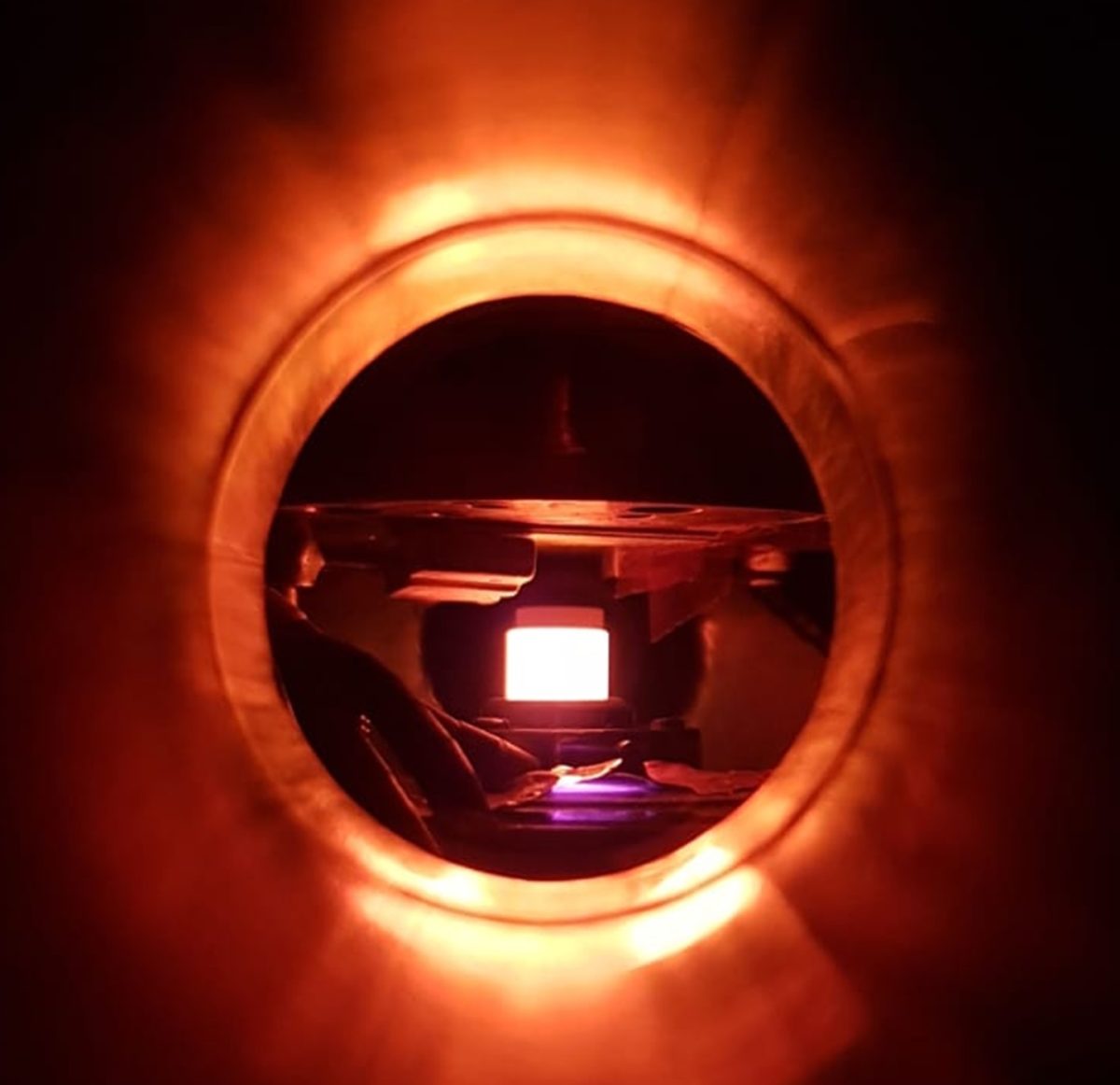Researchers at the Solar Energy Institute of the Technical University of Madrid in Spain and the Institute of Structure of Matter of the National Research Council in Italy have developed a solid-state thermal-to-electric energy converter based on hybrid thermionic-photovoltaics (TIPV).
“These devices are an efficient alternative to thermoelectric generators,” one of the research's corresponding authors, Alejandro Datas, told pv magazine. “So, they could be used in the same kind of applications, like waste heat recovery or power generation in space.”
The team built a small-scale laboratory prototype to test the fundamental operating principles of the technology. “We have demonstrated the capability of producing electricity from the simultaneous radiation of photons and electrons through space,” Datas further explained. “However, the performance is still very poor and much research is still needed to solve some key challenges and reach the performances that are predicted by the theory. Higher efficiency potential makes it possible to conceive their use in new applications like thermal energy storage devices or solar thermal generators.”
Thermoelectric generators have barely exceeded efficiencies of 10% and their main limitation is that not only electrons but also heat is transferred through the device. “This heat transfer is hardly avoidable as there is a solid continuity between the hot and cold sides of the converter, while in hybrid thermionic-photovoltaic converters the solid continuity between the hot and cold sides is broken by a vacuum gap,” Datas emphasized. “This gap is a channel for the flux of photons and electrons, but interrupts the heat propagation, ideally resulting in a negligible thermal conductivity and much higher conversion efficiencies, potentially exceeding 30%.”
Hybrid thermionic-photovoltaic systems are described as an upgraded version of pure thermionic converters, as they add the ability to harvest photons in a photovoltaic anode and produce an additional electrochemical potential that can be delivered as electricity. Moreover, the ability to harvest electrons confers the system with a higher output power capacity than standalone thermophotovoltaic generators, which have already demonstrated efficiencies over 30%.
The system consists of a three-terminal TIPV device made with a tungsten (W) thermionic cathode, a PV/anode structure made of an indium phosphide (n-InP) anode, and a photovoltaic cell based on indium gallium arsenide (InGaAs) with an energy bandgap of 0.74 eV. Both thermionic and photogenerated carriers are collected independently through two rear contacts made in the monolithic PV/anode structure. The PV/anode structure is equipped with two independent electrodes developed in the rear surface, one for collecting the electrons and the other for collecting the holes.
“When the cathode is heated at 1,400 C the PV sub-device produces 125.6 mW cm−2, whereas the thermionic sub-device produces 0.35 mW cm−2,” the scientists stressed. “The relatively high work function coatings and the large interelectrode gaps used in this work preclude achieving a high thermionic power contribution.”
The research groups are currently investigating new materials that can emit electrons at relatively low temperatures. “Otherwise, electrons are only emitted at very high temperatures, limiting the number of potential applications,” Datas highlighted. “Another challenge is that very few electrons are emitted far from a hot material and most of them accumulate near its surface. Therefore, solutions must be implemented to collect the electrons only a few microns from the surface. Even smaller distances — of just a few hundred nanometers — must be aimed to collect also the near-field thermal radiation, which are electromagnetic waves that only exist near the surface of a material.”
According to him, different approaches to address these challenges are being investigated, not only in the laboratories of the two research groups but in many others around the world. “Hopefully, this collective effort will result in a set of solutions that can bring this technology closer to market,” Datas concluded.
All the details on the new device can be found in the paper A Three-Terminal Hybrid Thermionic-Photovoltaic Energy Converter, published in Advanced Energy Materials. The same research group recently fabricated a latent heat thermophotovoltaic (LHTPV) battery that is able to store electricity in the form of latent heat at temperatures of over 1,000 C and then convert the stored heat to electricity on demand using a thermophotovoltaic system consisting of a thermal emitter and a photovoltaic diode cell.
This content is protected by copyright and may not be reused. If you want to cooperate with us and would like to reuse some of our content, please contact: editors@pv-magazine.com.




By submitting this form you agree to pv magazine using your data for the purposes of publishing your comment.
Your personal data will only be disclosed or otherwise transmitted to third parties for the purposes of spam filtering or if this is necessary for technical maintenance of the website. Any other transfer to third parties will not take place unless this is justified on the basis of applicable data protection regulations or if pv magazine is legally obliged to do so.
You may revoke this consent at any time with effect for the future, in which case your personal data will be deleted immediately. Otherwise, your data will be deleted if pv magazine has processed your request or the purpose of data storage is fulfilled.
Further information on data privacy can be found in our Data Protection Policy.